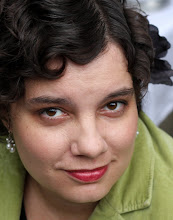
You really must go take a look at these pictures. So haunting...and strange...the pictures are amazing...
From Wired:It might be one of the most unconventional hospital wards on Earth, except that technically it’s not on Earth: It’s hundreds of meters below the surface.
For decades, the tunnels of the Solotvyno Salt Mine in Ukraine have hosted subterranean convalescents. Patients with various bronchial blockages, asthma and breathing problems are sent to the mines by the Solotvyno’s allergological hospital to suck up the curative air.
Kirill Kuletski’s photographs of these mines depict a cool underground outpost whose inhabitants appear to lie in eerie stasis. Patients are, in fact, undergoing speleotherapy: ambient exposure to the air of caves or mines, in this case air that’s permeated with salt.
Kuletski describes the atmosphere among patients as “calm and relaxed” despite the “appallingly unsafe conditions.”
“The presence of kids wearing safety helmets and cheap plastic sheets to protect them from dripping water from the ceiling makes being there even more surreal,” says Kuletski.
As reported by The Guardian in 2005, “Speleotherapy was discovered in Poland in the 1950s when it was noticed that salt miners rarely suffered from tuberculosis or respiratory diseases. It is a common treatment in Eastern and Central Europe, but almost unknown elsewhere.”
Doctors at the Solotvyno’s allergological hospital say airborne salts have the capacity to dissolve stubborn phlegm and kill off microorganisms known to cause infection, but experts in other regions of the world aren’t convinced of the benefits. Caroline Moye of Asthma UK told the Guardian, “There is very little evidence available to suggest it is an effective intervention treatment for people with asthma.”
Professor Kian Fan Chung, an asthma expert from the National Heart and Lung Institute at Imperial College in London has described the treatment as “fun,” attributing its positive results to the experiential rather than therapeutic aspects of the underground adventure.
The Ukrainian village Solotvyno lies close to the Romanian border. “Its within walking distance,” says Kuletski, “There are many Romanians employed by the clinic who cross through border control every day for work. Most of the staff speak three languages: Russian, Ukrainian and Romanian.”
About 300 meters below ground, Shaft No. 9 of the Solotyvno Salt Mine is the deepest in the world used for speleotherapy, and it transports over 5,000 patients each year. At any given time, 200 people will be recuperating in the saline grottoes, staying for afternoon or overnight sessions. Patients, a third of whom are children, usually return for 24 consecutive days.
The practical description of the mines, however, is at odds with Kuletski’s haunting “Speleotherapy” images. This does not appear to be a place of wellness, but rather a cavernous laboratory of some future dystopia, where sedated human guinea pigs await further experiments. Or a biological fallout shelter where survivors seek refuge from the toxic terra firma above."
















